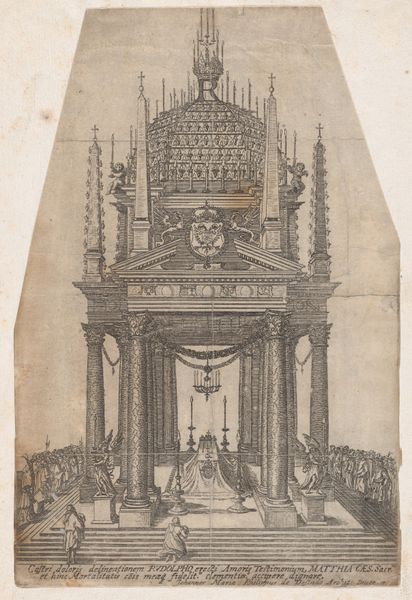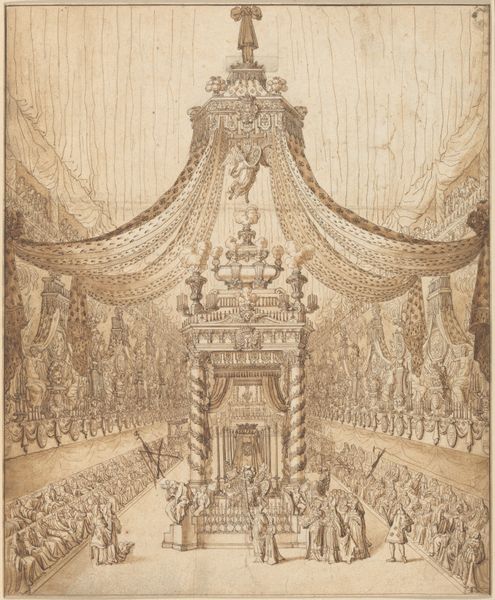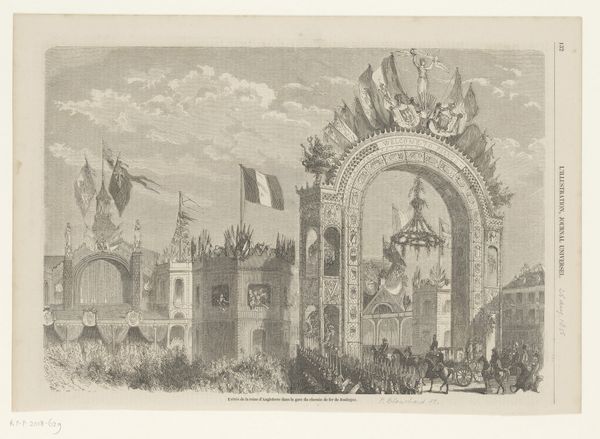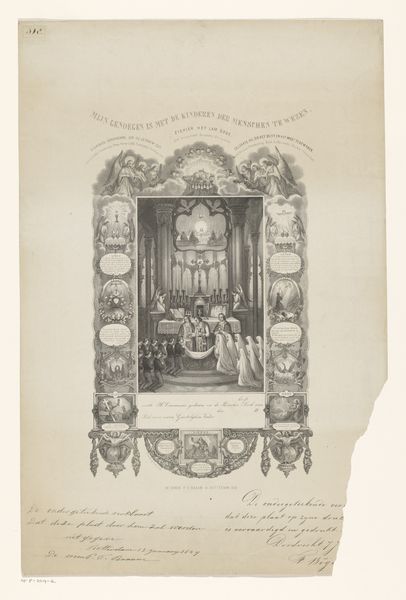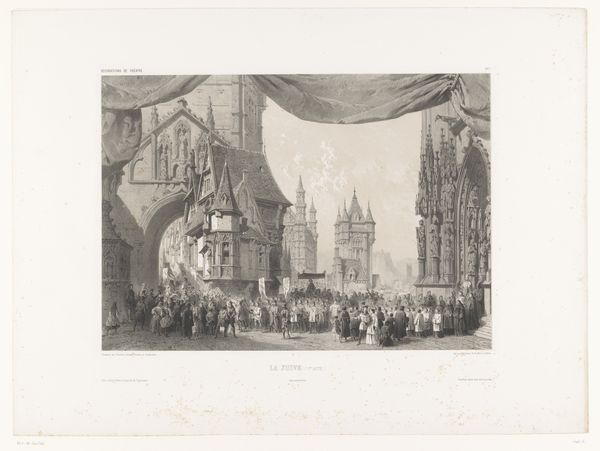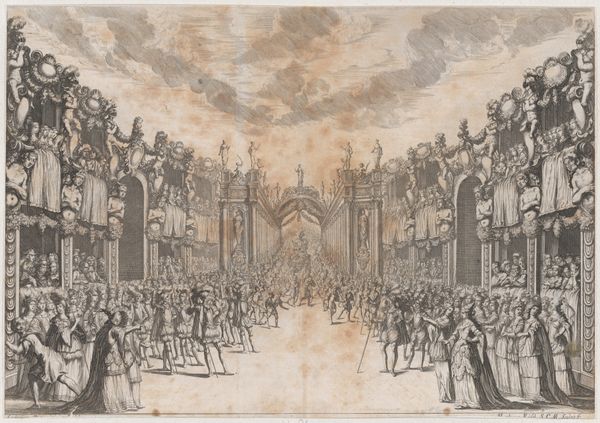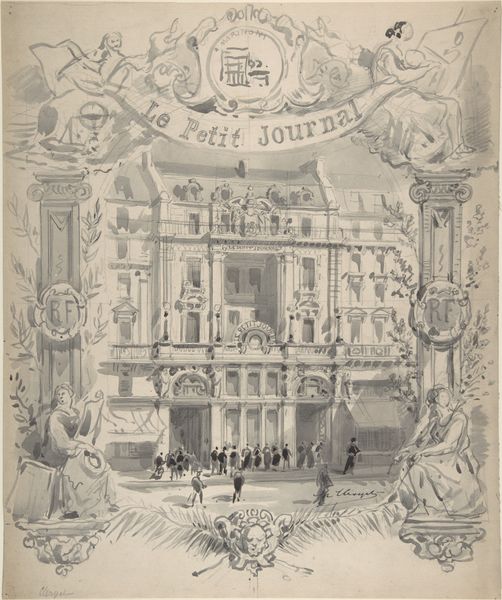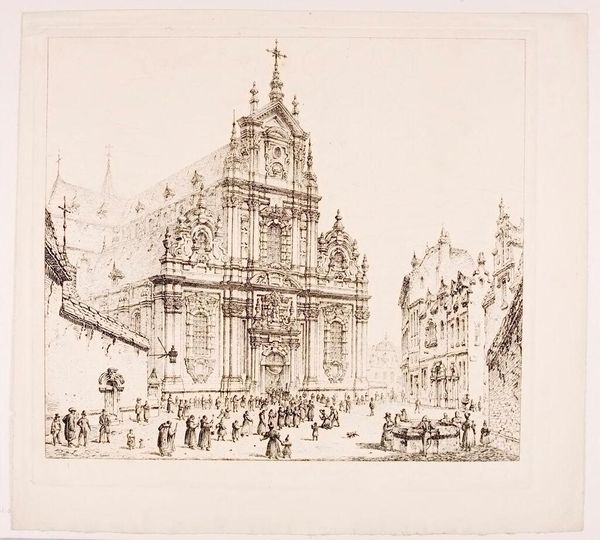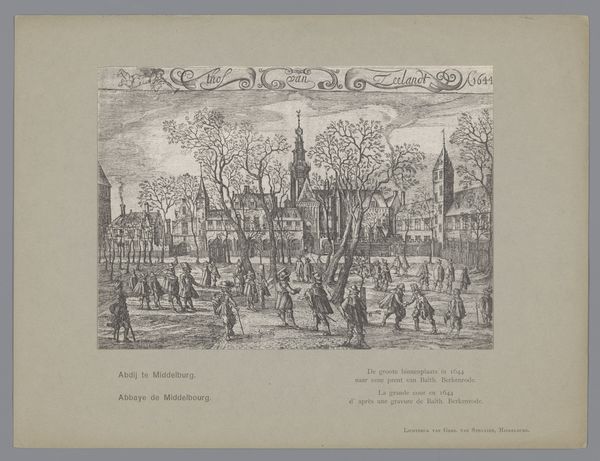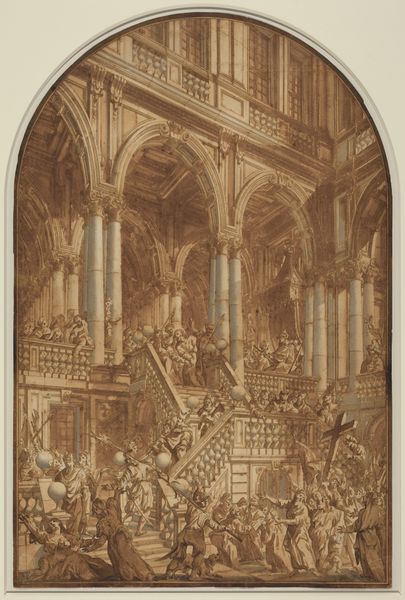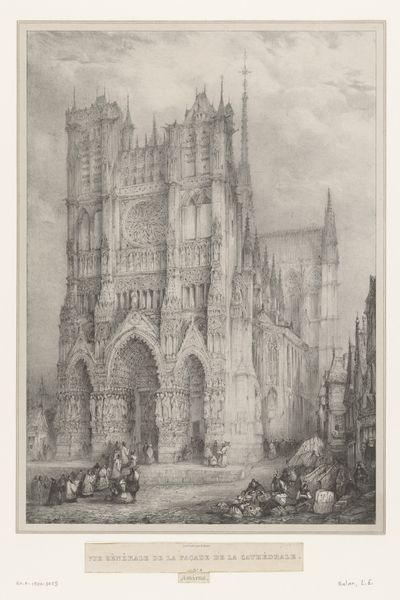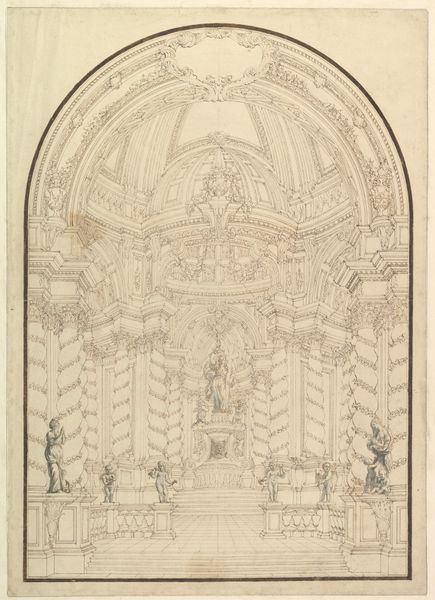
drawing, coloured-pencil, print, watercolor, architecture
#
drawing
#
coloured-pencil
#
water colours
# print
#
landscape
#
watercolor
#
coloured pencil
#
history-painting
#
watercolor
#
architecture
Dimensions: sheet: 20 3/16 x 13 7/16 in. (51.2 x 34.2 cm)
Copyright: Public Domain
Curator: At first glance, this strikes me as both delicate and grand; a sense of hushed reverence. Editor: Indeed. What we have here is a 19th-century work, titled "Russian Orthodox Cathedral, Paris." The medium involves a combination of drawing and print, employing colored pencil and watercolor techniques. You can find this piece residing right here at the Metropolitan Museum. Curator: The composition is quite interesting. The layering of architectural elements—the exterior above, interior scenes below—all contained within this ornate, almost ecclesiastical frame, creates a very specific visual hierarchy. Is it designed to mimic the structure of the Church itself, perhaps? A earthly experience vs heavenly? Editor: The layering could reflect that interplay of temporal and spiritual power within 19th-century Russian society. We must remember the historical context: the expansion of Russian influence in Europe, the complex relationship with France... the cathedral itself became a site for negotiating identity and power dynamics. The architectural drawings, placed next to and almost in conflict with the other buildings in frame, could signal the clash of Western vs Russian influence and ideologies. Curator: The eye is definitely drawn to that central banner, its text indecipherable to me but clearly important. It acts almost as a bridge between the exterior and interior scenes, unifying them thematically. Editor: It seems to serve to legitimize the church within a society actively going through industrial changes and political restructurings, as Russia at this time struggled to be seen as an equal among world powers. The image has a feeling of needing to belong but staying rigidly within their belief systems. Curator: Do you notice the contrast in color palette? The upper cathedral in cooler grays and blues against the warmer browns and golds of the interior celebration? It creates a fascinating visual dialogue between the austere exterior and the vibrant inner life of faith. Editor: True, but let’s not overlook the impact of the printmaking process. That contributes significantly to the artwork's texture and subtle gradations of color, no? The softness achieved is quite evocative. Curator: Yes. All those tiny strokes and watercolor washes add to its almost ethereal quality. Editor: Overall, a compelling interplay of architectural form, historical context, and artistic technique! Curator: Precisely. This piece highlights the fusion of Russian and French identities in 19th-century Paris.
Comments
No comments
Be the first to comment and join the conversation on the ultimate creative platform.
